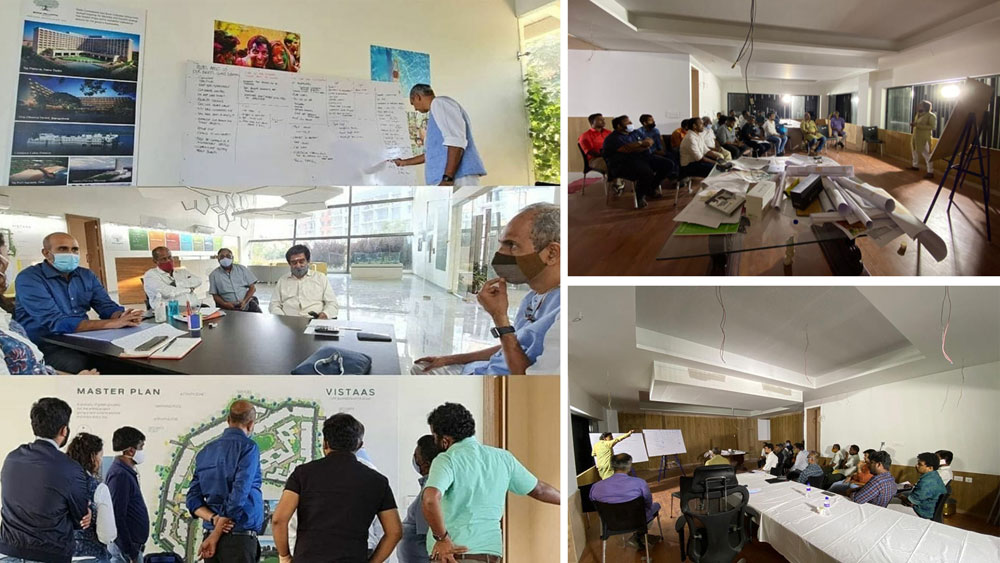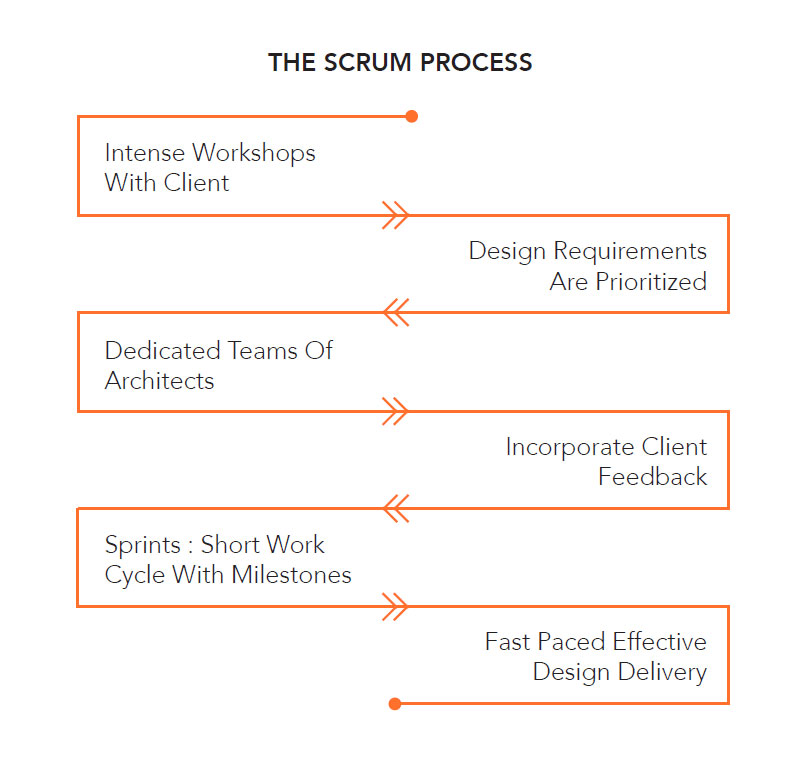SCRUM: An Inclusive, Efficient and Effective Design Process

“Time is the scarcest resource and unless it is managed, nothing else can be managed.”
-- Peter Drucker
The prompt delivery and success of an architectural project can largely be attributed to the management and processes behind its execution. It is essential to identify and define the goals and aspirations of all stakeholders involved at the conception stage itself. In our quest to deliver real value in a way that is both time and cost effective, we have adopted a new-age approach to project management called the “SCRUM” process.
SCRUM is a framework for project management that emphasizes teamwork, accountability, and iterative progress toward a well-defined goal. Its agile approach focuses on bringing clarity to the vision of the stakeholders.
Within the teams, this small-scale, self-organized way of working leads to flat hierarchies and transparent goals, promoting communication and increasing productivity. Projects are implemented step by step within defined time intervals, referred to as sprints, with a self-organized team. All tasks are prioritized, which helps optimise work flows, leading to the efficient completion of the project. Additionally, it allows the team to react flexibly to changing requirements in every project phase.
SCRUM follows a 6-step process to ensure that all stakeholders flourish:
- The process begins with an intensive workshop with the clients, which involves brainstorming sessions followed by the definition of a series of essential questions. At the end of this workshop, a list of design requirements are made through a democratic voting system.
- Design requirements are then prioritized to ensure that the building serves the client’s highest aspirations. Usually, it is 20% of the design features that contribute to 80% of the value. It is thus essential to focus on making this 20% truly transcending.
- A dedicated team of experts focused on the project is set up to design features in a way that is timeless and beautiful.
- Bigger goals are now broken down into smaller, tangible goals to be achieved within two-week timeframes called sprints. Daily internal reviews are carried out, along with a review of the milestones achieved at the end of every sprint.
- Client feedback is incorporated at every stage, thereby allowing flexibility to integrate new ideas. This is done to ensure that the client is in sync with the design team, leading to timely delivery without any delays.
- A timeless, beautiful, and effective design solution is therefore delivered on time.
The team generally consists of the following:
- SCRUM Master: The SCRUM master is the leader who guides the team to comply with the rules and processes of the execution. The SCRUM Master also provides mentoring and training to the team.
- Product Owner: The product owner translates the vision of the project to the team, and represents the various stakeholders of the project.
- SCRUM Team: The SCRUM team is a group of experienced professionals with technical knowledge responsible for executing the project in time.
SCRUM is structured to help teams naturally adapt to changing conditions and user requirements, with short release cycles and re-prioritization built into the process so the team can constantly learn and improve.

Originally used in the development of software, we are the first architectural practice in the world to adopt the SCRUM method. This helps us cut costs and working hours drastically, eventually leading to improved productivity. We have successfully executed several projects using this efficient process that has become an integral part of our workflow today -- one that we will continue to follow.


